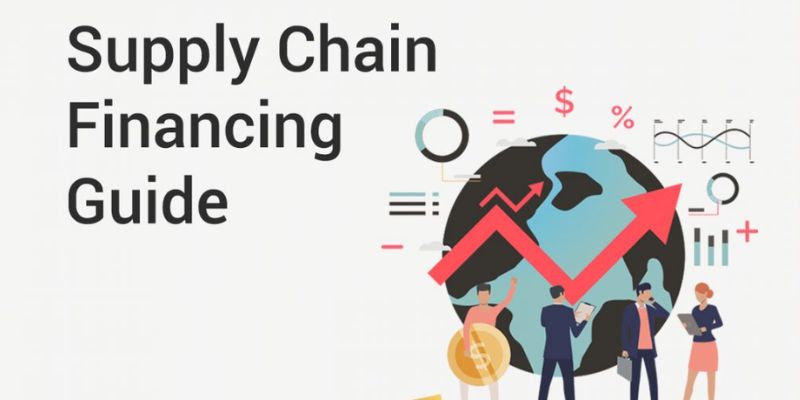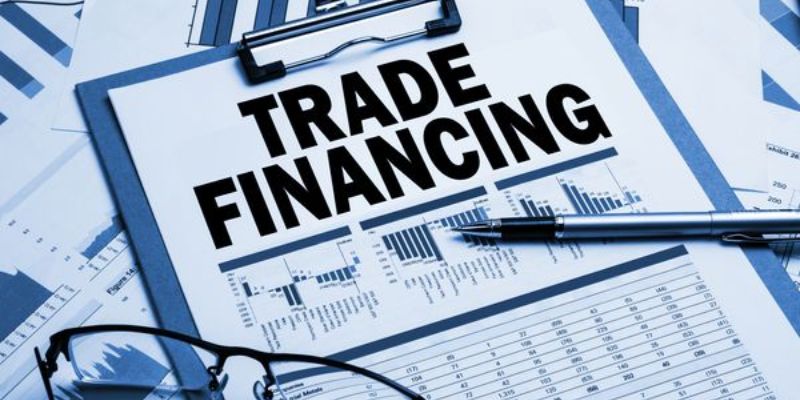Welcome to “Trade Finance Unlocked: Revolutionizing Supply Chain Efficiencies.” Here, we dive into trade finance and supply chain applications—the game-changers for businesses worldwide. Ever felt stuck with inefficiencies that clog up your supply network? I’m here to steer you through the nuts and bolts of trade finance, a crucial link to smooth operations and solid growth. From key financial instruments to cutting-edge tech, I’ll guide you through tactics and tools that enhance management, optimize capital, and navigate the tricky waters of compliance and risk. Ready to transform your supply chain? Let’s make your business thrive!
Understanding the Backbone of Trade Finance
The Role of International Trade Finance
Let’s talk about international trade finance. Imagine it as the fuel for global trade engines. It helps companies buy, sell, and trade goods across borders. Without it, buying from or selling to other countries would be tough. It offers ways to pay and get paid. And it keeps cash flowing so businesses can grow.
International trade finance is vital. It backs up nearly every deal when goods cross oceans or skies. It gives trust between folks who may never meet face to face. With backing like this, companies dare to dream big and reach far. It’s a mix of money magic and careful planning that makes world trade tick.
Now, what are these tools that make it all happen? Some key players are letters of credit, bank guarantees, and more. These are promises made by banks to put everyone’s mind at ease. They say the buyer will certainly pay, and if not, the bank will. It’s like having a safety net that catches you when deals get shaky.
Key Trade Finance Instruments and Their Uses
Let’s dive into these key players, these trade finance instruments. First up, letters of credit. These are not as complex as they sound. They are just letters from a bank that promise payment to a seller. If you’re selling, wouldn’t you sleep better knowing a bank’s got your back? That’s what a letter of credit does!
Next, there are bank guarantees. This is another pledge, but it’s even broader. It’s not just about payment for goods. It can cover all kinds of performance hitches. Say you’re hired to make something but worry you won’t get paid. A bank guarantee tells you, “Don’t fret, we’ll make sure you get your due.”
Now, think of trade credit insurance. This is your umbrella for a rainy day. It keeps you safe if a buyer can’t or won’t pay up. You’re snug with coverage that replaces the lost cash. And then there’s export and import financing. These help you to pay or get paid sooner for those big orders. You don’t have to wait for slow payments to plan your next big thing.
Financial supply chain is like a river that flows money instead of water. Getting cash in the right places at the right time is key. This is where inventory financing helps. Got stuff in a warehouse? Get a loan using it as a pledge. Warehouse space turns into money space. And this money keeps your supply chain shiny and moving.
Last, we must chat about blockchain. Everything today is about speed and trust, and blockchain brings both to trade finance. Blocks of data chain together, tracking every deal with no mistakes. It’s like having a super-smart ledger that can’t be fooled. It makes everything clear, quick, and safe.
Trade finance may sound all serious and stiff. But it’s really about helping businesses jump higher and reach further. With these tools, even the smallest shop can become a global player. It’s about opening doors to a world of chances, making trade less scary and more fair. Every trader can find their path in this wide trade world. And that is a big win for all of us!
Enhancing Supply Chain Through Financial Strategies
Streamlining Supply Chain Management Solutions
In the world of international trade finance, staying on top means moving goods and money smartly. Take letters of credit, for example. They’re promises by banks to pay sellers on time. People love them because they make trade safer. Here’s how they work: The buyer’s bank promises to pay the seller. Money moves only if sellers show that they shipped the goods as agreed. This way, both sides win.
Managing supply chains well means using the right tools. Tools like export and import financing give sellers and buyers more power. They help businesses grow by letting them buy now and pay later. This is great when you have big orders to fill but need more cash on hand.
Another win comes from chain digitization. It makes things faster by using tech like electronic bill of lading. This lets everyone check cargo details online, any time. No more lost papers or waiting forever!
Implementing Working Capital Optimization Measures
Let’s talk cash. Working capital optimization means having enough money to do business without wasting it. Here’s the deal: Having lots of products is good, but too much can hurt you. Smart inventory financing strategies help. They make sure you don’t get caught with too much or too little stock.
And don’t forget trade credit insurance. It’s like a safety net. If a buyer can’t pay, you’re still covered. That’s peace of mind for you!
There’s also factoring and invoice discounting. They’re short-term fixes that turn unpaid invoices into cash right away. This helps if you’re strapped for cash and can’t wait for payments.
In the end, using these tools right keeps money flowing and businesses growing. It’s all about being smart with your finance moves and keeping your supply chain running like a well-oiled machine.
Technological Innovations in Trade and Supply Chain
Blockchain Application in Trade Finance
Blockchain is a game changer in how we handle money across the world. Think of it like a digital ledger. It’s not owned by one person or bank. Everyone can see it and trust it. It’s making international trade finance safer and faster. No more waiting days for a payment to go through. Now, it’s just minutes.
How does blockchain help with letters of credit? Well, letters of credit are promises from a bank. They say, “we’ll pay if your buyer can’t.” But they can be slow and paper-heavy. Blockchain replaces all that paper with digital records. Everyone involved, from banks to businesses, can see these records. They can check them anytime, anywhere. This builds trust and cuts down mistakes. It speeds up trade, helping businesses grow fast.
Trade Finance Automation and Supply Chain Digitization
Trade finance automation takes care of the dull stuff. We’re talking about paperwork and number crunching, all done by computers now. This leaves folks free to focus on the big picture of their business. It also cuts down errors—no more late nights fixing typing mistakes. Automation speeds up things like checking credit and getting loans. This means businesses can make deals and ship goods faster than ever.
Supply chain digitization is like giving your supply chain a smartphone. Suddenly, it’s all connected. You can track a product from when it’s made to when it’s sold. This is huge for managing stock. It lets you see what’s selling fast and what’s not. If a supplier can’t deliver, you find out quickly. You can then make changes to keep your shelves stocked.
Both trade finance automation and digitization are making it easier to move goods around the world. We’re making deals quicker and keeping track of every step, so nothing gets lost or delayed. And when businesses run smooth, customers are happy. That’s what keeps our global economy humming.
Navigating Compliance and Risk in Global Trade
Strategies for Global Trade Compliance and Customs Procedures
When it comes to global trade, you have to play it safe. I’ve seen businesses struggle to grasp the maze-like customs procedures and compliance rules. But why is it vital to get it right? Well, for starters, sticking to the rules keeps your goods moving. Avoiding delays, fines, and legal issues is a must in international trade finance.
Here’s how I help firms stay on top: I get to know the details of global trade compliance. I learn about a country’s customs rules like I’m studying for a big test. It’s more than just paperwork; it’s about knowing what can and cannot cross borders. Take letters of credit, for example. They’re a promise that your buyers are good for the money. But each country has its little twists on how you should use them.
And when I talk about export and import financing, it’s not just moving money around. It’s about finding the right path that fits the rules and gets your cash flowing quicker. Firms often come to me puzzled about how to manage their overseas cash. That’s where I come in with working capital optimization. It’s like giving your business a cash flow workout to make it stronger.
I also put a spotlight on trade credit insurance. Think of it like a safety net for your money. It’s there to catch you if a deal goes south and someone can’t pay up. It’s simple stuff but makes a huge difference if the unexpected happens.
Credit Risk Analysis and Payment Risk Mitigation Techniques
Guessing who will pay and who might not is a risky game. That’s why I dive deep into credit risk analysis in trade. What’s that, you ask? It’s like being a detective with numbers. I look at the clues — a company’s credit history, their financial health, etc. I do that to figure out if they’ll pay on time.
But even the best detectives can’t predict everything. This is where payment risk mitigation swings into action. It’s got tools like bank guarantees to make sure sellers don’t lose out if a buyer bails.
And yes, this stuff sounds heavy. But it’s crucial. Why? Because in a world where a deal can span countries, there are tons of things that can go sideways. My job is to map out the risks before they show up.
By getting bank guarantees right or knowing the ins and outs of an electronic bill of lading, I help businesses steer clear of trouble. It’s not just about filling in forms; it’s about knowing the dance and teaching my clients the steps.
Having a firm handle on global trade compliance ratchets down the risk. And that, folks, means smoother sailing across international waters. It’s like having a good captain at the helm and the right map to find the treasure. That treasure? It’s the success of your global deals, unhurt by delays or money traps. And that’s a win in my book.
In this post, we dug into trade finance, the hidden force behind global business. We explored its key roles and the tools that make trading smooth. Next, we showed how smart money moves can boost supply chains. We talked about making supply chains better and making sure businesses have the cash they need to grow.
We also peeked at how tech like blockchain is changing the game in trade and supply chains. This tech makes things faster, safer, and less of a headache. Lastly, we tackled the tricky stuff—staying on the right side of trade laws and keeping risks low.
Here’s what to take away: Trade finance is vital, and using it right can make or break a business. As an expert, I know these strategies and innovations can lead to huge wins. Stay sharp on the rules, and risk less. That’s how you win in global trade. Use what you’ve learned here to get ahead and stay there.
Q&A :
What are the common trade finance applications used in supply chain management?
Trade finance applications play a critical role in ensuring the smooth functioning of supply chain operations, providing the necessary financial support for international and domestic trade transactions. Common applications include letters of credit, trade credit insurance, factoring, and export credit. These tools help businesses manage cash flow, mitigate risks associated with the trade of goods, and foster trust among trade partners.
How do trade finance applications improve supply chain efficiency?
By utilizing trade finance applications, companies can streamline their supply chain processes, ensuring timely payments and receipts. These applications can minimize transaction delays by providing the necessary capital to cover the gap between shipment and payment. This can lead to increased efficiency, reduced operational costs, and the ability to manage larger volumes of transactions with confidence.
Can small businesses benefit from trade finance and supply chain applications?
Absolutely. Small businesses can greatly benefit from trade finance and supply chain applications which can enable them to compete more effectively in the global market. These applications provide access to working capital, protect against currency fluctuations, and allow for more favorable payment terms with suppliers. This helps small businesses to fulfill orders they might otherwise not be able to handle and grow their enterprise.
What are the risks associated with trade finance in supply chain operations?
While trade finance applications facilitate smoother transactions, they also come with their set of risks. These can include credit risk, country and political risks, foreign exchange risks, and compliance risks. Companies must understand these risks and work with financial institutions that offer solutions to mitigate them, ensuring that their supply chain operations are safeguarded against potential disruptions.
How has technology impacted trade finance and supply chain applications?
The emergence of fintech and blockchain technology has significantly impacted trade finance and supply chain applications. These technologies have introduced new platforms for facilitating trade finance that are faster, more transparent, and more secure. Smart contracts, real-time tracking, and digital documentation reduce the opportunities for fraud and errors, leading to a more efficient supply chain network that benefits all the stakeholders involved.


